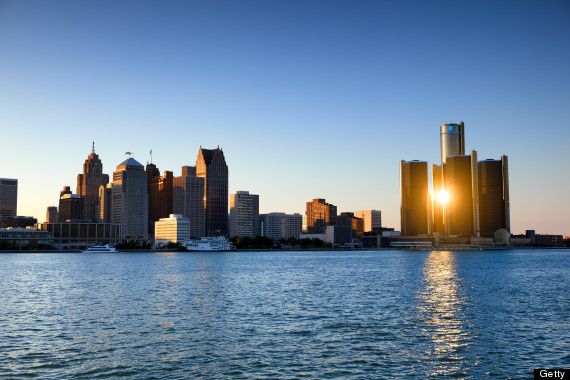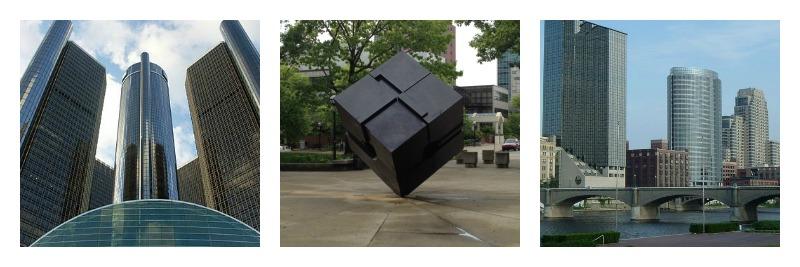When it comes to economic growth in Michigan, one size does not fit all. Take a look at the varying scope and scale of companies here and you’ll find a general pattern of three different types of businesses associated with different regions: large multinational corporations in Southeast Michigan, small high-tech start-ups in Ann Arbor, and family-owned, mid-size companies in Western Michigan.
Each of these micro-economies has its own set of dynamics. In the Detroit metro area, big companies connected to the auto industry and heavy manufacturing dominate. These organizations are sensitive to changes in the economic climate, and when the industry falters, nearly everything falters with it. The good news, though, is that these large organizations provide stability in the region.
The story in Ann Arbor is completely different. Despite its proximity to Detroit, Ann Arbor does not depend on the same massive companies. With the University of Michigan as an intellectual, cultural, and financial hub, the industry is knowledge and the spirit is an entrepreneurial one: people don’t depend on pre-existing companies—they start new ones. Consider the fact that the founders of Google and Groupon, and dozens of other successful new economy entrepreneurs, got their start in Ann Arbor.
There is yet another economic reality in Western Michigan, where neither big businesses nor small start-ups dominate. From Kalamazoo to Traverse City, mid-size, family-owned companies thrive. Grand Rapids serves as its economic center. Excellent sources of jobs, these organizations are sustainable units of reliable profitability. They make the region a particularly stable place and grow at a steady pace. But attracting younger, highly skilled talent into this region can be a challenge given its distance from a vibrant cosmopolitan center.
In an ideal world, these three different economies would be interconnected like concentric circles with the large companies at the center, encouraging the growth of adjacent mid-size companies, in turn promoting the development of surrounding smaller companies.
The problem is that these three economies simply don’t sync up. They are so disconnected from each other, both ideologically and economically, that we don’t benefit from the rewards of their potential synergistic relationships. It’s time to bridge the gaps between these three regions.
So what’s The Next Idea?
If we consider our community as a collection of companies, organizations and inter-related civic interests – not as discrete entities – we will begin to see ways in which to create valuable connections. Think of it like a shopping mall: A few anchor stores like Macy’s and Nordstrom, a wide variety of mid-size category stores like J. Crew and Sephora, and a handful of specialty niche stores like Coach and Godiva. A mall that has achieved both a balance and some coherence between these three types of stores usually provides a better shopping experience than ones with missing pieces.
One way to do this with Michigan’s economy is to identify three matchmakers for each of the three basic varieties of businesses. These individuals would work in cooperation with the Michigan Economic Development Corporation in cross-regional teams to identify and create efficiencies, drive sales and develop innovative solutions that could not be created separately.
For example, a start-up firm in Ann Arbor develops a breakthrough oil filtration material but lacks the capability to produce or sell it at scale. Matchmakers would meet and find a company in Kalamazoo that makes oil filters for snowmobiles and boat motors and help them license the technology. Then the matchmakers meet sometime later to discuss an opportunity at a major automobile manufacturer in the Detroit area that is looking for an oil filtration solution that greatly increases gas mileage while being more eco-friendly. With the group’s help, the corporation licenses the technology from the mid-size company.
Trade groups do this all the time, as do governments. For example, Canada and Germany routinely package collections of businesses and negotiate favorable licensing agreements and provide entrée into new markets. That is, they actively connect the products and services of small, medium and large companies and represent them as a single solution to potential buyers.
Consider this the regional equivalent of a business model innovation. That is, the innovation doesn’t exist in any product or service offered but rather how everything fits together to become a novel and attractive solution. Think about how the real innovation in Apple doesn’t exist in any one gadget or service but rather the seamless connection between them: Your iPhone works with your iPad and connects to iTunes and they’re all serviced by the Apple Store. The innovation is in how it all syncs up. Now if we can just do something similar with Michigan’s three economies.
Share Your Ideas:
· How would you select the matchmakers who would connect the state’s regional businesses?
· What other ideas do you have for getting people in Detroit, Ann Arbor, and Grand Rapids talking and collaborating more?
Join the conversation in the comments section below, on Twitter or Facebook, or let us know your Next Idea here.
Click here to listen to my interview with Michigan Radio.
Originally published by MichiganRadio.com on December 1st, 2014.

